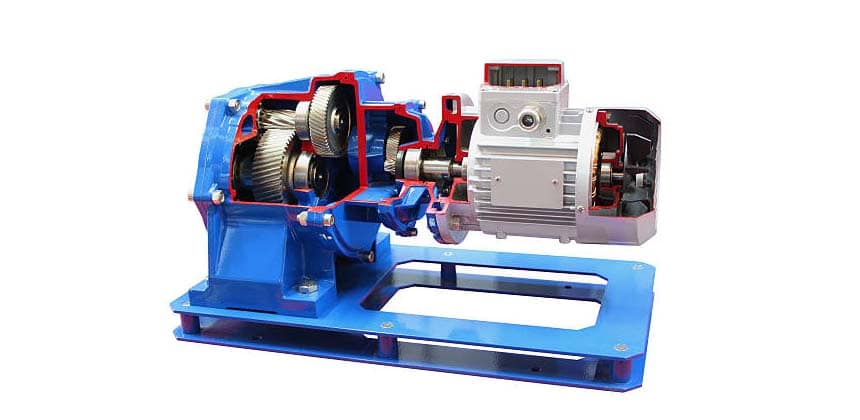Difference between Pump and Motor
Pump
Working Principle: A pump is a mechanical device that draws in liquids or gases by means of a rotating impeller or plunger and moves them to another position at a certain pressure. The working principle of pumps can be divided into two main categories:
- Centrifugal pumps: utilize a rotating impeller (vane) to generate centrifugal force to draw and discharge a liquid or gas from an inlet.
- Positive displacement pumps: utilize devices such as plungers, diaphragm, gears, or screws to move and compress fluids through changes in volume.
Components: Pumps typically include the following major components:
- Inlet: The point at which fluid enters the pump.
- Impeller or Plunger: Depending on the type of pump, a rotating or moving part used to draw in and discharge fluid.
- Casing or housing: surrounds the impeller or plunger and is used to direct the flow of fluid.
- Outlet: the point at which fluid leaves the pump.
Areas of application: pumps are used in a wide variety of applications including:
- Water pumps: used for water supply, drainage and irrigation.
- Chemical industry: for handling chemicals.
- Oil and gas industry: used for transportation of oil and gas.
- Manufacturing industry: for the flow and handling of liquids and gases.

Motor
Principle of operation: An electric motor is a mechanical or electrical device that generates a magnetic field in its windings by means of an electric current and uses the magnetic field to interact with permanent magnets or other magnetic fields to produce rotary motion. This is a principle based on Faraday’s law of electromagnetic induction.
Components: A motor usually consists of the following major components:
- Rotor: the rotating part of a motor, usually consisting of a set of windings.
- Stator: the static part of a motor that contains the permanent magnets or electromagnetic windings that produce the magnetic field.
- Windings: wires or coils of wire located on the rotor that produce a magnetic field through the flow of electric current.
- Interface and shaft: the part of the motor that connects the motor to external devices, usually through a shaft that transmits rotary motion.
Areas of application: motors are used in a wide variety of applications, including:
- Electric motor vehicles: used in the power system of automobiles, airplanes, trains and other transportation.
- Household appliances: used in washing machines, vacuum cleaners, refrigerators and other home appliances.
- Industrial machinery: used to drive production lines, machine tools and other industrial equipment.
- Aerospace: used in control and propulsion systems for airplanes, rockets and satellites.
Pumps and motors can be assembled together and this combination is often referred to as an electric pump. An electric pump is a device in which the pump and motor are tightly integrated in order to accomplish both the movement of fluid and the provision of drive power. This combination is used in a wide variety of engineering and applications to achieve specific fluid transfer and control tasks.
EODD (Electric Operated Double Diaphragm) stands for Electric Double Diaphragm Pump, which is a specific type of electrically operated pump. EODD pumps use double diaphragms to propel and pump fluids through electrically driven mechanical components. These pumps are typically used to handle a variety of liquids, including chemicals, oils, solvents, paints, etc. They can also handle a variety of corrosive liquids, making them widely used in chemical, pharmaceutical, and other corrosive environments.
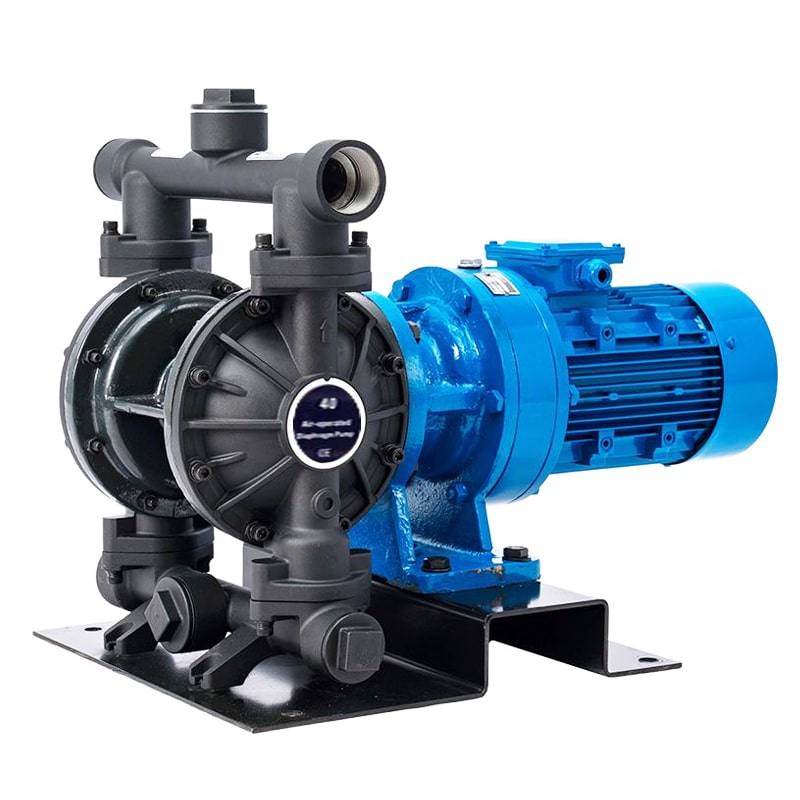
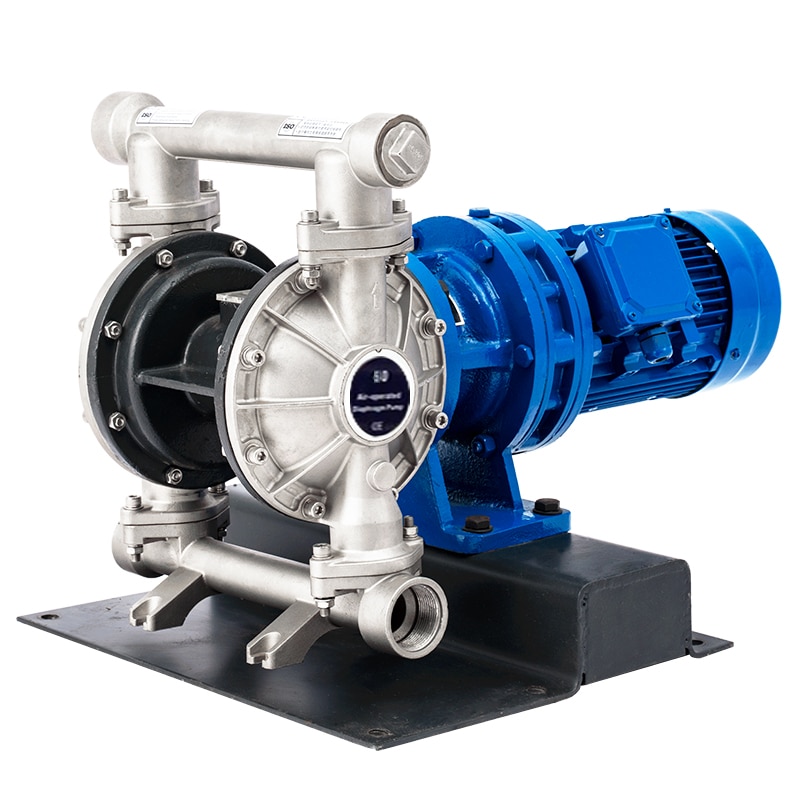
Difference in efficiency between pumps and motors
Pump efficiency
- Principle of operation: The main task of a pump is to transfer a fluid from one place to another, usually involving the extraction, lifting or compression of the fluid. The efficiency of a pump is affected by the type of pump as well as the operating conditions. Different types of pumps (e.g. vertical multistage pump and progressive cavity pump) have different efficiency characteristics.
- Efficiency range: Pump efficiency is usually evaluated at specific flow and head conditions. Pump efficiency varies with flow and head. Typically, a pump’s efficiency is highest near its rated operating point, but may decline at low flow or high head conditions.
- Energy losses: Pumps generate some energy losses during operation, such as friction losses and eddy current losses. These losses reduce the efficiency of the pump.
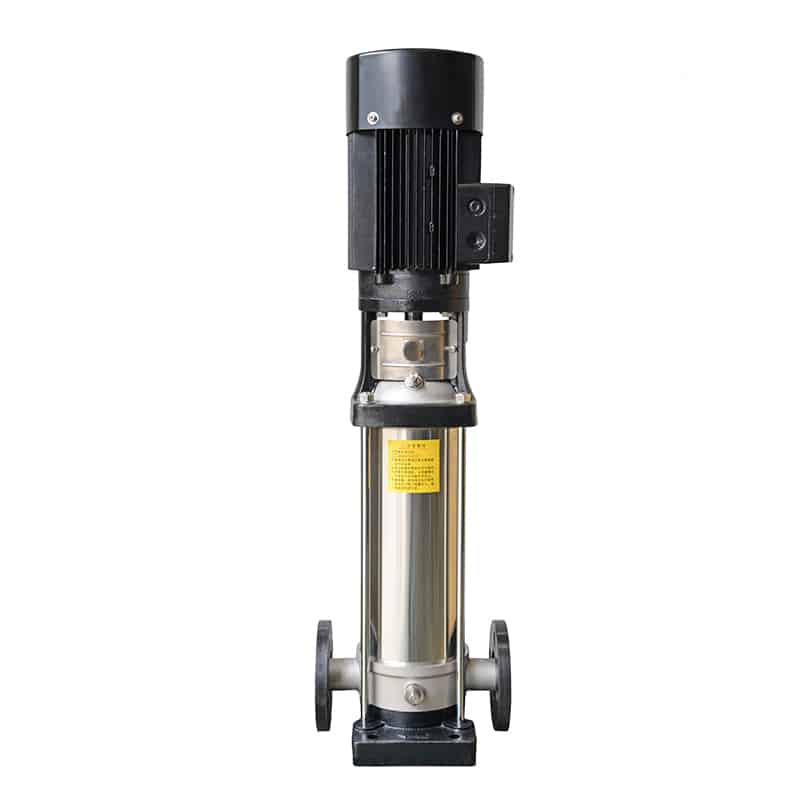
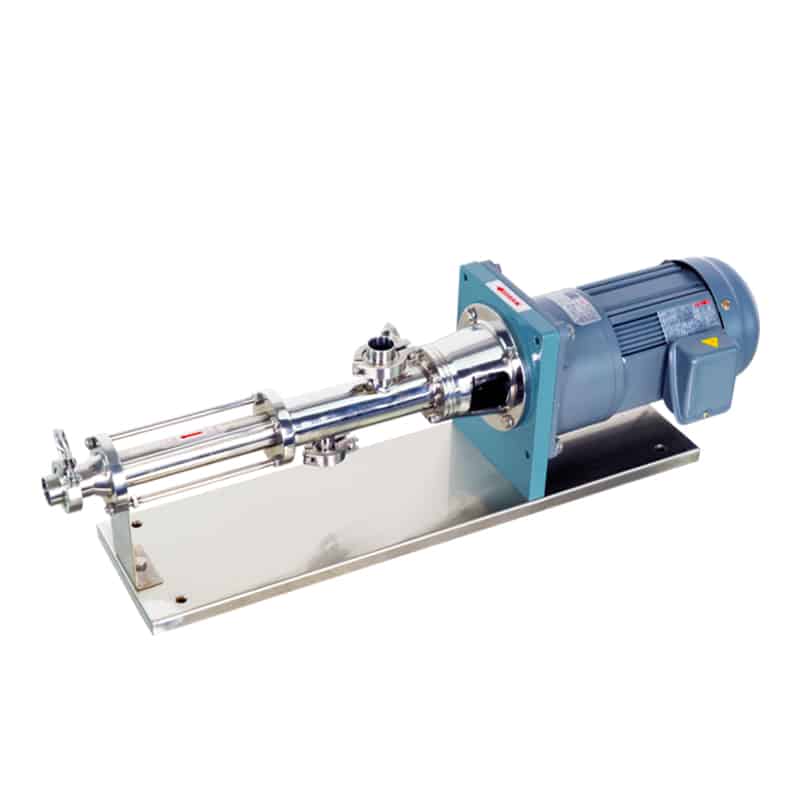
Motor efficiency
- Principle of operation: Electric motors convert electrical energy into mechanical energy, usually rotary motion. The efficiency of a motor is mainly influenced by the design and build quality of the motor, as well as the load conditions.
- Efficiency range: The efficiency of a motor is usually evaluated under different load conditions. Motors usually have the highest efficiency near their rated load, but efficiency may drop under partial load or overload conditions.
- Energy losses: Motors also incur some energy losses during operation, such as core losses, resistive losses and mechanical losses. These losses reduce the efficiency of the motor.
Differences between pumps and motors for energy conversion
Pump energy conversion
- A pump is a mechanical device whose main task is to convert mechanical energy (usually from an external motor or engine) into fluid energy.
- A pump transfers mechanical energy to move or lift a liquid or gas through a mechanical device such as a rotating impeller or plunger.
- The job of a pump is to convert mechanical energy into pressure energy (an increase in the pressure of a liquid or gas) and kinetic energy (an increase in the velocity of a liquid or gas) in order to move a fluid from one place to another, such as pumping water, transferring liquids, or compressing gases.
Motor Energy Conversion
- A motor is a mechanical or electrical device whose main task is to convert electrical energy into mechanical energy.
- A motor generates a rotating magnetic field by energizing electricity in its windings, which then interacts with a fixed magnetic field (usually provided by permanent magnets) to rotate a mechanical part (the rotor).
- The job of an electric motor is to convert electrical energy into mechanical energy to produce rotary motion or to propel other mechanical systems, such as vehicles, mechanical equipment, or household appliances.
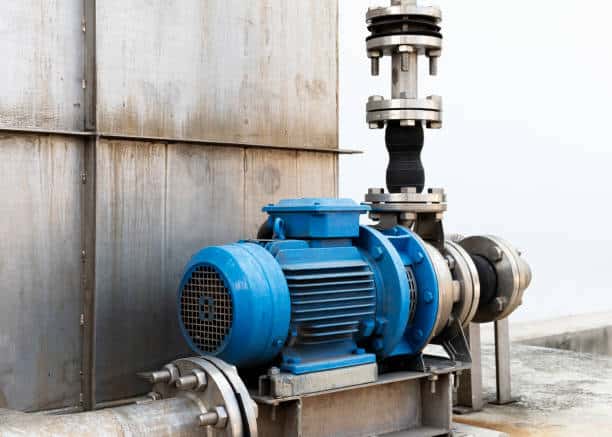
Difference between pump and motor output
Pump output
- Fluid output: The primary output of a pump is a fluid, which can be a liquid (e.g., water, oil) or a gas. The job of a pump is to move fluid from one place to another, which usually involves pumping, lifting or compressing the fluid.
- Flow and pressure: The performance of a pump is usually described in terms of flow and pressure to describe its output. Flow is the volume of liquid or gas flowing through the pump per unit of time, usually measured in gallons per minute or cubic meters per hour. Pressure is the force or pressure exerted on a fluid, usually measured in pounds of force per square inch (PSI) or pascals (Pa).
- Fluid energy: The output of a pump is the energy of the fluid, which usually takes the form of kinetic energy (velocity energy) and pressure energy (static energy).
Motor output
- Mechanical output: The primary output of a motor is mechanical energy, usually rotary motion. A motor converts electrical energy into mechanical motion, which can be shaft rotation, linear motion, or other mechanical motion.
- Rotational speed and torque: The performance of a motor is usually described in terms of rotational speed and torque to characterize its output. Rotational speed is the speed at which the motor rotates and is usually measured in revolutions per minute (RPM). Torque is the rotational force or torque produced by a motor and is usually measured in Newton meters (Nm) or pound-feet (lb-ft).
- Mechanical energy: The output of a motor is mechanical energy, which is typically used to drive a variety of mechanical devices and systems, such as a vehicle’s powertrain, machine tools, or household appliances.
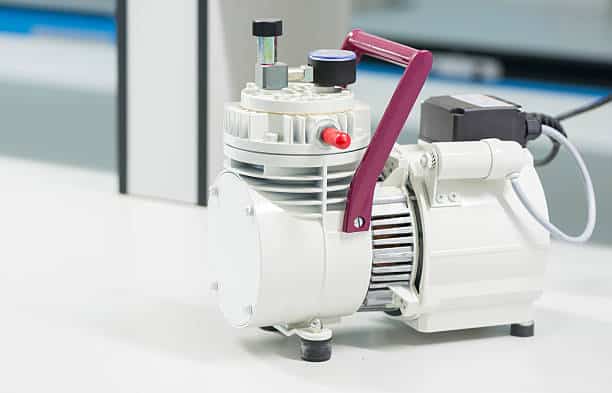
What are the energy losses in pumps and motors?
Both pumps and motors incur some energy losses during their operation, which depend on their design and operating conditions. The following are some common types of energy losses in pumps and motors:
Pump energy loss
- Friction loss: When the rotating parts inside the pump (e.g. impeller) are in contact with the fluid, friction loss will occur. This friction converts some of the mechanical energy into heat, resulting in energy loss.
- Vortex losses: When fluid passes through the pump, vortex phenomena may occur, which can lead to a loss of fluid energy. Poor design or improper operating conditions may increase eddy current losses.
- Leakage losses: In some pump types, such as displacement pumps, there may be leakage problems that result in loss of fluid through holes or gaps within the pump, resulting in loss of energy.
- Vibration and noise losses: Some pumps produce vibration and noise during operation, which is essentially a loss of energy.
- Extra work: Since the pump requires extra work to overcome the resistance and friction of the fluid, some of this energy is used to overcome this resistance, resulting in a loss of energy.
Motor energy loss
- Resistance losses: Inside the motor, resistance is created as current passes through the wires and windings, resulting in resistance losses. These losses are dissipated in the form of heat.
- Core losses: The iron core (stator and rotor parts) of a motor generates hysteresis and eddy current losses under alternating currents, converting part of the electrical energy into heat.
- Mechanical losses: Mechanical friction and vibration may occur in the mechanical parts of the motor during rotational or linear motion, resulting in mechanical energy losses.
- Cooling losses: In order to keep the motor operating within the normal temperature range, a cooling system may be required, the operation of which consumes energy.
- Copper Losses: Resistance in the motor windings can also lead to copper losses in the form of heat dissipated as current passes through.
These energy losses need to be considered and minimized in the design and operation of pumps and motors to improve system efficiency. Reducing energy losses contributes to lower energy consumption, improved equipment life and lower operating costs.
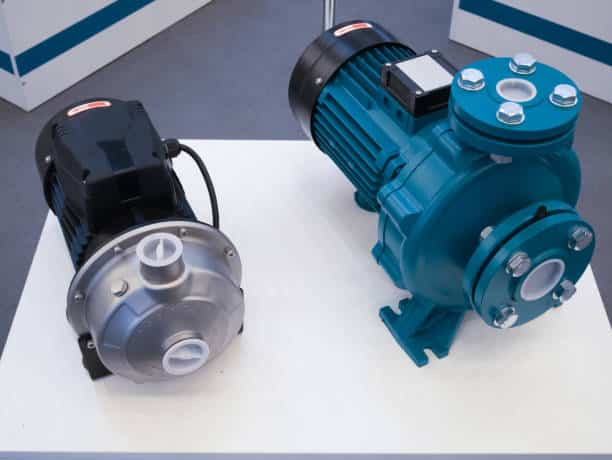
What do pumps and motors have in common?
Although pumps and motors are very different in their functions, they both play important roles in mechanical engineering and share some common characteristics that make them indispensable components in modern engineering and technological applications. They both convert energy into mechanical work in different ways, providing critical power and control for a variety of engineering and life applications.
- Mechanical devices: Pumps and motors are mechanical devices that contain rotating parts (such as the impeller of a pump or the rotor of a motor) and fixed parts (such as the pump casing or the stator of a motor) and play an important role in engineering and mechanical systems.
- Energy requirements: Both pumps and motors require energy to operate. Pumps typically require an external power source, such as an electric motor, to provide the required power, while motors require electrical power as an input to generate mechanical motion.
- Engineering applications: Both pumps and motors are used in a wide variety of engineering applications. Pumps are used for the transportation and flow control of liquids or gases, while electric motors are used to drive a variety of mechanical devices and systems, from household appliances to industrial machines.
- Performance parameters: Both pumps and motors have performance parameters that describe their efficiency and capabilities. For example, pump performance parameters include flow rate and pressure, while motor performance parameters include speed and torque.
- Mechanical engineering principles: Pumps and motors follow some basic mechanical engineering principles, such as motion conversion, force and power transfer. They both rely on physical principles to fulfill their functions.
Summary
Pumps are mechanical devices used to move fluids (such as liquids or gases) from one place to another, increasing their pressure or speed, while motors are electric devices that convert electrical energy into mechanical energy, which is used to drive mechanical devices. There are significant differences in the functions and operating principles of the two, with pumps primarily involved in the transportation of fluids and the increase in pressure, while motors are used to generate mechanical power, with specific outputs that include flow rate and pressure (for the pumps) as well as rotational speed and torque (for the motors).
AOBL is a fluid transfer specialist offering AODD Pumps, EODD Pumps, Double Diaphragm Pump, Sanitary Diaphragm Pump, Filter Press Feed Pump, Progressive Cavity Pump, Magnetic Drive Pump, Vertical Centrifugal Pump, Chemical Pump and Diaphragm Pump Parts & Accessories. Feel free to contact us.

